Opinion & Analysis
Wishon: “What shaft flex should I use?”

Let’s start our discussion by making one thing clear. There’s a lot to fitting the flex and bend profile of shafts — enough to write a whole book.
In asking me to write about the fitting of each of the key specs of golf clubs, GolfWRX in essence gives me a “1-pound bag” each week to offer information about each fitting spec. Covering everything about shaft flex and bend profile would be like trying to put 100 pounds of stuff into that 1-pound bag!
For those who are really into knowing as much as possible about flex and bend profile fitting in shafts, I recommend you read the three-part series I wrote for GolfWRX some time ago.
Related
- Part 1 — Taking the guesswork out of selecting shafts
- Part 2 — Taking shaft fitting from guessing to specifics
- Part 3 — Facts about shafts: What they do
For those who may not be that familiar with fitting for FLEX and for BEND PROFILE, fitting for the flex is a matter of finding a shaft with the correct swing speed rating for the golfer’s clubhead speed AND transition/tempo, while fitting the bend profile involves matching the tip stiffness design of the shaft to the golfer’s point of release.
Of all the points that an experienced club fitter has to evaluate to do a good job in the fitting of flex and bend profile, the most important one is to have accurate shaft bend profile measurement and swing speed rating data on the largest possible population of shaft models and flexes. This is because there are no standards for the flex of a shaft in the golf industry. Each golf company and shaft company is free to decide how stiff any of their letter flex codes on their shafts are to be. As such, the R flex from one company can be of the same stiffness as the S flex from another company or the A flex from a third.
Without access to a large data base of actual stiffness and swing speed rating measurements for shafts to be able to clearly know and compare the stiffness design of shafts, fitting for flex and bend profile is a matter of time consuming and frustrating trial and error. Period.
The following bend profile data graph is simply offered as an example of the type of shaft stiffness measurement data required to take shaft flex/bend profile fitting from a trial-and-error process to one of clear, succinct organization. This example graph will also prove the point about the confusion in flex due to a lack of standards in the industry.
Each of the five shafts in this graph are labeled and sold as S-flex shafts. The stiffness measurements represent a range of three full flexes, or stated another way, represent a swing speed rating difference of more than 30 mph.
With such data, the flex and bend profile fitting analysis follows these procedures:
1. Accurately measure the average clubhead speed of the golfer with a driver and a 5- or 6-iron.
2. Observe the golfer’s downswing transition and tempo and evaluate it as either:
A) Smooth/gradual/passive with little sense of acceleration.
B) Average, with some sense of force and acceleration from the transition through the downswing.
C) Forceful and aggressive, as if the golfer cannot wait to pour on the coals to accelerate the club to impact.
In simple terms, the club fitter is observing whether the golfer is more of a swinger (A), a definite hitter (C) or somewhere in between (B) with his downswing transition and tempo.
3. Observe the golfer’s point of release (i.e. the point at which the golfer begins to unhinge the wrist-cock angle on the downswing as either (1) early, (2) midway, (3) later, or (4) very late. Another way to evaluate this is to reference the point of starting the release to the hour numbers on a clock while facing the golfer.
- (1) Early: 11 to 9:30
- (2) Midway: 9:30 to 8:30
- (3 Later: 8:30 to 7:30
- (4) Very Late: 7:30 to 6:30
4. Choose shafts of the correct weight (see my story on shaft weight/total weight), which have a swing speed rating that matches to the golfer’s clubhead speed and an adjustment for their transition and tempo evaluation with a tip stiffness design that matches the golfer’s point of release.
We will use an example of a golfer with a 100 mph driver clubhead speed. The up or down adjustment in the swing speed rating and tip stiffness recommendation is the same for all other clubhead speeds.
The above procedures are done to give the club fitter A STARTING POINT for shaft flex and bend profile fitting. Suitable candidate shafts are chosen by the club fitter from which the test club hitting process begins.
Again, because the best club fitters are superb multi-taskers during the test club sessions for flex and bend profile, the club fitter is also testing for shaft weight, swing weight and continually asking the golfer for feedback with each change of head weight or shaft.
Without question, the matter of ADVANCED PLAYER SHAFT FLEX/BEND PROFILE FITTING must also include an evaluation of the golfer’s preference for feel elements and shot shape/performance related to the flex/bend profile. Experienced club fitters will ask the golfer to provide the names of shafts the golfer has used, along with the golfer’s feedback of too high, too low, good flight, too stiff feeling, too flexible feeling, just right feeling, etc.
With this information, the club fitter will access his database of shaft stiffness measurements to study as many of the golfer’s previous shafts and compare the stiffness measurements. Through this process, the club fitter will be able to know what the actual stiffness measurements are for each shaft model feedback opinion from the golfer. From this the club fitter will have a very clear picture of what the stiffness measurements need to be to best satisfy the golfer’s feel and shot shape preferences.
Again, with the right database of shaft stiffness measurements, the process of flex and bend profile fitting becomes a very organized, very orderly, and very accurate process. Without such information, shaft flex and bend profile fitting will forever be a matter of trial and error.
Related
- What length should your clubs be?
- What lofts should your clubs be?
- Face angle is crucial for a proper fitting
- The best way to fit lie angle
- How to choose the right club head design
- Tom Wishon’s keys to set makeup
- Getting the right size grip, time after time
- What shaft weight should you play?
- What swing weight should your clubs be?
- What shaft flex should I use?
This story is part of a 10-part series from Tom Wishon on professional club fitting.
- LIKE255
- LEGIT38
- WOW19
- LOL5
- IDHT1
- FLOP7
- OB2
- SHANK10
Opinion & Analysis
Myrtle Beach, Explored: February in South Carolina
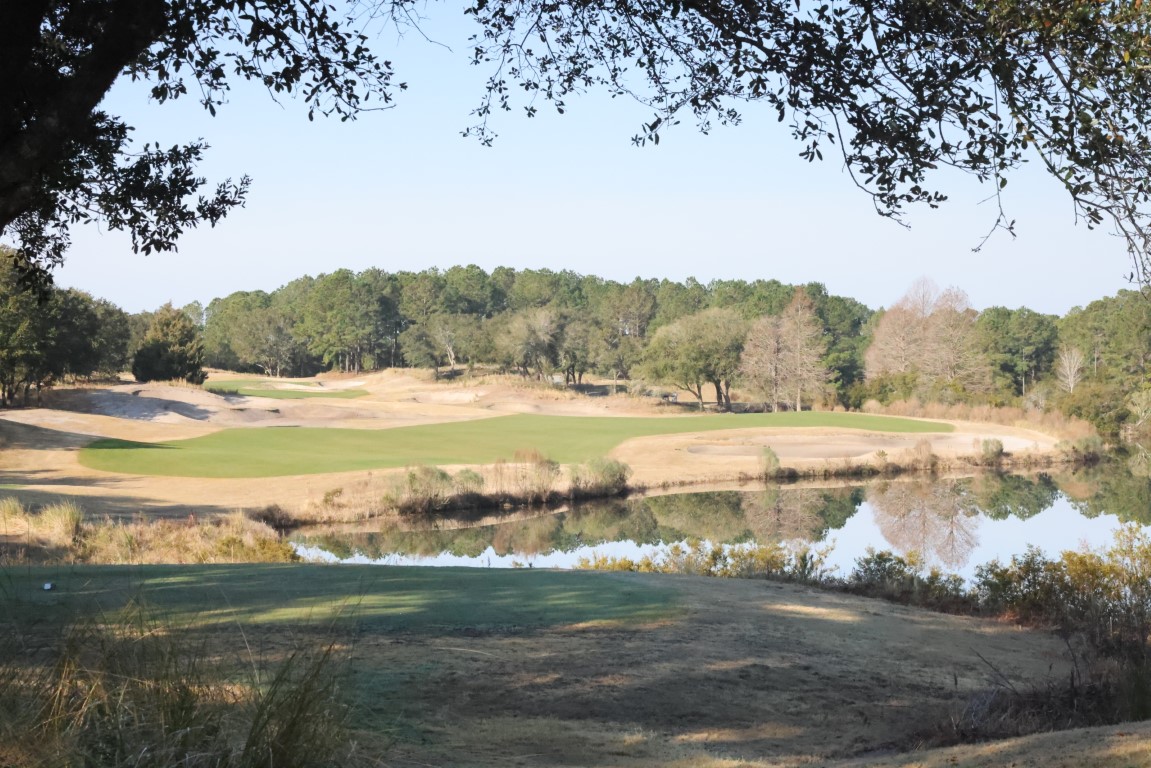
As I gain in experience and age, and familiarity breeds neither contempt nor disdain, I understand why people return to a place. A destination like Myrtle Beach offers a sizable supply and diversity of restaurants, entertainment venues, and shops that are predicated on the tenets of the service industry. Greet your customers with a smile and a kind word, and they will find comfort and assurance. Provide them with a memorable experience and they will suggest your place of business to others.
My first tour of Myrtle Beach took place in the mid-1980s, and consisted of one course: Gator Hole. I don’t remember much from that day, and since Gator Hole closed a decade later, I cannot revisit it to recollect what I’d lost. Since then, I’ve come to the Grand Strand a few times, and been fortunate to never place a course more than once. I’ve seen the Strantz courses to the south and dipped my toe in the North Carolina courses of Calabash. I’ve been to many in the middle, including Dunes, Pine Lakes, Grande Dunes among them.
2024 brought a quartet of new courses, including two at the Barefoot Resort. I’d heard about the North Myrtle Beach four-pack of courses that highlight the Barefoot property, including layouts from Pete Dye, Tom Fazio, Davis Love III, and Greg Norman. I had the opportunity to play and shoot the Dye and Fazio tracks, which means that I’ll have to return to see the other two. Sandwiched between them were the TPC-Myrtle Beach course, also from Tom Fazio, and the Pawley’s Plantation trace, by the hand of Jack Nicklaus. I anticipated a bit of the heroic, and bit of the strategic, and plenty of eye candy. None of those architects would ever be considered a minimalist, so there would be plenty of in-play and out-of-play bunkers and mounds to tantalize the senses.
My nephew arrived a few days early, to screen a few more courses. As a result, you the reader will have an extra quarter of mini-reviews, bringing the total of courses in this piece to eight. It was inconceivable that CJR would play four courses that I had never played nor photographed, but that was the case. His words appear at the end of this piece. We hope that you enjoy the tour.
Main Feature: Two Barefoots, a TPC, and Pawley’s Plantation
What Paul “Pete” Dye brought back from his trips to the United Kingdom, hearkened back to what C.B. MacDonal did, some 65 years prior. There is a way of finding bunkers and fairways, and even green sites, that does not require major industrial work. The Dye course at Barefoot Resorts takes you on a journey over the rumpled terrain of distant places. If there’s one element missing, it’s the creased and turbulent fairways, so often found in England and Ireland. The one tenet of playing a Dye course, is to always aim away from temptation, from where your eyes draw you. Find the safe side of the target, and you’ll probably find your ball. It then stands that you will have a shot for your next attempt. Cut the corner, and you might have need to reload. The Barefoot course begins gently, in terms of distance, but challenges with visual deception. After two brief 4s and a 3, the real work begins. The course is exposed enough, to allow the coastal winds to dance along the fairways. Be ready to keep the ball low and take an extra club or two.
If memory serves, TPCMB is my first trek around a TPC-branded course. It had all the trappings of a tour course, from the welcome, through the clubhouse, to the practice facilities and, of course, the course. TPC-Myrtle Beach is a Tom Fazio design, and if you never visit Augusta National, you’ll now have an idea of what it is like. You play Augusta’s 16th hole twice at TPCMB, and you enjoy it both times. Fazio really likes the pond-left, green-angle-around par three hole, and his two iterations of it are memorable.
You’ll also see those Augusta bunkers, the ones with the manicured edges that drop into a modestly-circular form. What distinguishes these sand pits is the manner in which they rise from the surrounding ground. They are unique in that they don’t resemble the geometric bunkering of a Seth Raynor, nor the organic pits found in origin courses. They are built, make no mistake, and recovery from them is manageable for all levels of bunker wizardry.
If you have the opportunity to play the two Tom Fazio courses back to back, you’ll notice a marked difference in styling. Let me digress for a moment, then circle back with an explanation. It was written that the NLE World Woods course designed by Fazio, Pine Barrens, was an homage to Pine Valley, the legendary, New Jersey club where Fazio is both a member and the architect on retainer. The Pine Barrens course was plowed under in 2022, so the homage no longer exists. At least, I didn’t think that it existed, until I played his Barefoot Resort course in North Myrtle Beach.
Pine Valley might be described as an aesthetic of scrub and sand. There are mighty, forced carries to travers, along with sempiternal, sandy lairs to avoid. Barefoot Fazio is quite similar. If you’re not faced with a forced carry, you’ll certainly contend with a fairway border or greenside necklace of sand. When you reach the 13th tee, you’ll face a drive into a fairway, and you might see a distant green, with a notable absence: flagstick. The 13th is the icing on the homage cake, a callout of the 8th hole at Pine Valley. Numero Ocho at the OG has two greens, side by side, and they change the manner in which the hole plays (so they say.) At Barefoot Fazio, the right-side green is a traditional approach, with an unimpeded run of fairway to putting surface. The left-side green (the one that I was fortunate to play) demands a pitch shot over a wasteland. It’s a fitting tribute for the rest of us to play.
Be certain to parrot the starter, Leon’s, advice, and play up a deck of tees. Barefoot Fazio offers five par-three holes, so the fours and fives play that much longer. Remember, too, that you are on vacation. Why not treat yourself to some birdie looks?
The Jack Nicklaus course at Pawley’s Plantation emerged from a period of hibernation in 2024. The greens were torn up and their original contours were restored. Work was overseen by Troy Vincent, a member of the Nicklaus Architecture team. In addition, the putting corridors were reseeded with a hardier, dwarf bermuda that has experienced great success, all along the Grand Strand that is Myrtle Beach.
My visit allowed me to see the inward half first, and I understand why the resort wishes to conclude your day on those holes. The front nine of Pawley’s Plantation works its way through familiar, low country trees and wetlands. The back nine begins in similar fashion, then makes its way east, toward the marsh that separates mainland from Pawley’s Island. Recalling the powerful sun of that Wednesday morning, any round beginning on the second nine would face collateral damage from the warming star. Much better to hit holes 11 to close when the sun is higher in the sky.
The marshland holes (12 through 17) are spectacular in their raw, unprotected nature. The winds off the Atlantic are unrelenting and unforgiving, and the twin, par-three holes will remain in your memory banks for time’s march. In typical Golden Bear fashion, a majority of his putting targets are smallish in nature, reflecting his appreciation for accurate approach shots. Be sure to find the forgiving side of each green, and err to that portion. You’ll be grateful.
Bonus Coverage: Myrtlewood, Beechwood, Arrowhead, and King’s North
Arrowhead (Raymond Floyd and Tom Jackson)
A course built in the middle of a community, water threatens on most every hole. The Cypress 9 provides a few holes forcing a carried drive then challenge you with water surrounding the green. On Waterway, a drivable 2nd hole will tempt most, so make sure the group ahead has cleared the green.
Myrtlewood (Edmund Alt and Arthur Hills) and Beechwood (Gene Hamm)
A middle of the winter New Englander’s paradise. Wide open fairways, zero blind shots and light rough allow for shaking off the rust and plenty of forgiveness. A plethora of dog legs cause one to be cautious with every tee shot. Won’t break the bank nor the scorecard.
King’s North @ Myrtle Beach National (Arnold Palmer)
- LIKE2
- LEGIT0
- WOW0
- LOL0
- IDHT0
- FLOP1
- OB0
- SHANK1
19th Hole
Vincenzi’s 2024 Players Championship betting preview: Pete Dye specialists ready to pass tough TPC Sawgrass test
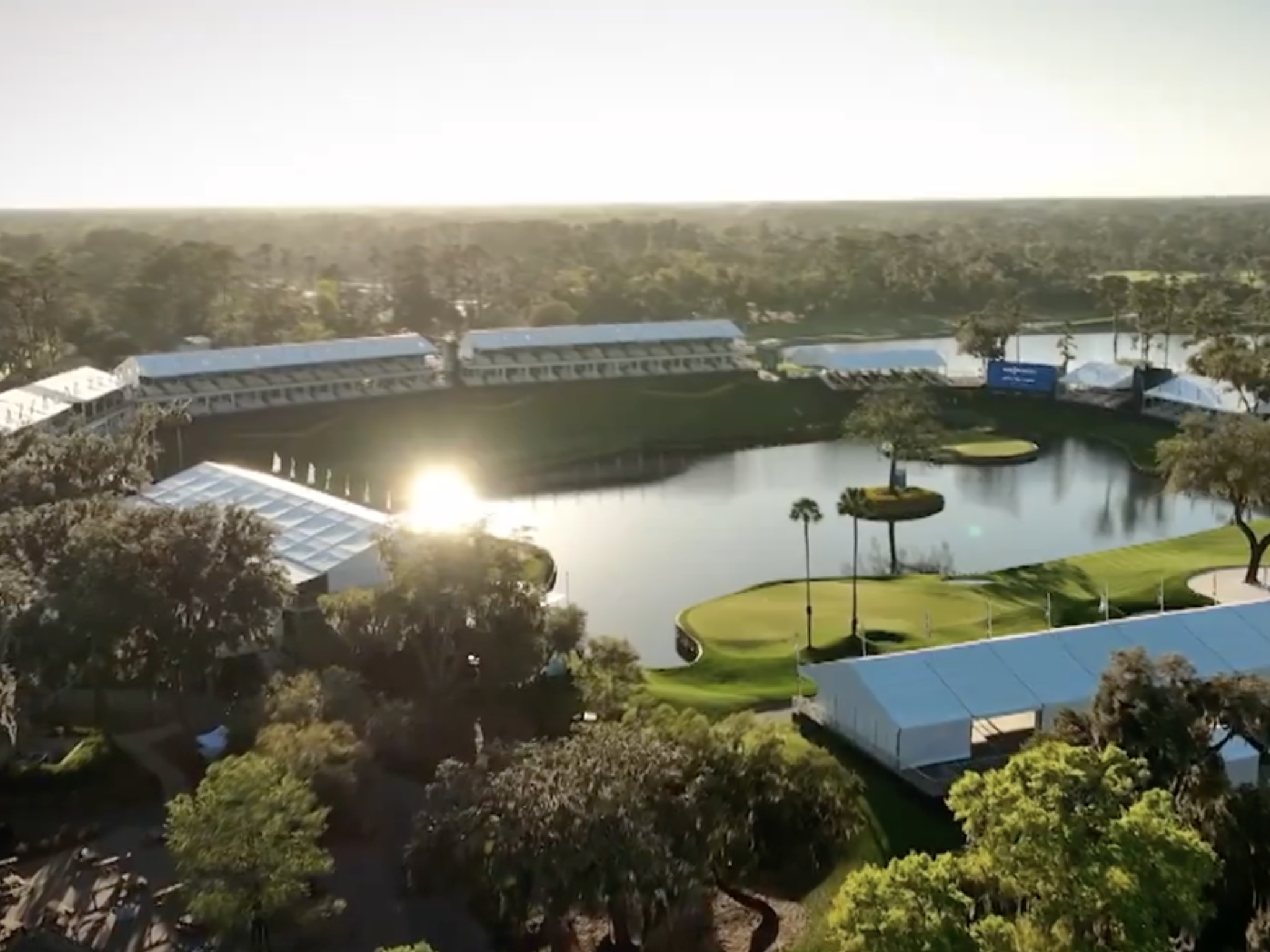
The PGA Tour heads to TPC Sawgrass to play in one of the most prestigious and important events of the season: THE PLAYERS Championship. Often referred to as the fifth major, the importance of a PLAYERS victory to the legacy of a golfer can’t be overlooked.
TPC Sawgrass is a par-72 measuring 7,245 yards and featuring Bermudagrass greens. Golfers must be patient in attacking this Pete Dye course.
With trouble lurking at every turn, the strokes can add up quickly. With a par-5 16th that is a true risk-reward hole and the famous par-3 17th island green, the only safe bet at TPC Sawgrass is a bet on an exciting finish.
THE PLAYERS Championship field is often referred to as the strongest field of the year — and with good reason. There are 144 in the field, including 43 of the world’s top 50 players in the OWGR. Tiger Woods will not be playing in the event.
THE PLAYERS is an exceptionally volatile event that has never seen a back-to-back winner.
Past Winners at TPC Sawgrass
- 2023: Scottie Scheffler (-17)
- 2022: Cameron Smith (-13)
- 2021: Justin Thomas (-14)
- 2019: Rory McIlroy (-16)
- 2018: Webb Simpson (-18)
- 2017: Si-Woo Kim (-10)
- 2016: Jason Day (-15)
- 2015: Rickie Fowler (-12)In this article and going forward, I’ll be using the Rabbit Hole by Betsperts Golf data engine to develop my custom model. If you want to build your own model or check out all of the detailed stats, you can sign up using promo code: MATTVIN for 25% off any subscription package (yearly is best value).
5 Key Stats for TPC Sawgrass
Let’s take a look at five metrics key for TPC Sawgrass to determine which golfers boast top marks in each category over their last 24 rounds.
1. Strokes Gained: Approach
Strokes Gained: Approach has historically been far and away the most important and predictive stat at THE PLAYERS Championship. With water everywhere, golfers can’t afford to be wild with their iron shots. Not only is it essential to avoid the water, but it will also be as important to go after pins and make birdies because scores can get relatively low.
Total SG: Approach Over Past 24 Rounds
- Tom Hoge (+1.37)
- Scottie Scheffler (+1.20)
- Tony Finau (+0.99)
- Jake Knapp (+0.83)
- Shane Lowry (+0.80)
2. Total Driving
This statistic is perfect for TPC Sawgrass. Historically, driving distance hasn’t been a major factor, but since the date switch to March, it’s a bit more significant. During this time of year, the ball won’t carry quite as far, and the runout is also shorter.
Driving accuracy is also crucial due to all of the trouble golfers can get into off of the tee. Therefore, players who are gaining on the field with Total Driving will put themselves in an ideal spot this week.
Total Driving Over Past 24 Rounds
- Rory McIlroy (22)
- Akshay Bhatia (25)
- Keith Mitchell (25)
- Adam Hadwin (34)
- Sam Burns (+39)
3. Strokes Gained: Total at Pete Dye Designs
TPC Sawgrass may be Pete Dye’s most famous design, and for good reason. The course features Dye’s typical shaved runoff areas and tricky green complexes. Pete Dye specialists love TPC Sawgrass and should have a major advantage this week.
SG: Total (Pete Dye) per round over past 36 rounds:
- Patrick Cantlay (+2.02)
- Scottie Scheffler (+1.90)
- Min Woo Lee (+1.77)
- Sungjae Im (+1.72)
- Brian Harman (+1.62)
4. Strokes Gained: Ball Striking
Prototypical ball-strikers have dominated TPC Sawgrass. With past winners like Sergio Garcia, Henrik Stenson, Webb Simpson, Rory McIlroy and Justin Thomas, it’s evident that golfers must be striking it pure to contend at THE PLAYERS.
SG: Ball Striking Over Past 24 Rounds
- Scottie Scheffler (+2.02)
- Tony Finau (+1.51)
- Tom Hoge (+1.48)
- Keith Mitchell (+1.38)
- Will Zalatoris (+1.18)
5. Par 5 Average
Par-5 average is extremely important at TPC Sawgrass. With all four of the Par-5s under 575 yards, and three of them under 540 yards, a good amount of the scoring needs to come from these holes collectively.
Par 5 Average Over Past 24 Rounds
- Scottie Schefler (+4.31)
- Erik Van Rooyen (+4.35)
- Doug Ghim (+4.34)
- Wyndham Clark (+4.34)
- Matt Fitzpatrick (+4.31)
6. Strokes Gained: Florida
We’ve used this statistic over the past few weeks, and I’d like to incorporate some players who do well in Florida into this week’s model as well.
Strokes Gained: Florida over past 30 rounds:
- Scottie Schefler (+2.43)
- Erik Van Rooyen (+1.78)
- Doug Ghim (+1.78)
- Wyndham Clark (+1.73)
- Matt Fitzpatrick (+1.69)
7. Strokes Gained: Total on Courses with High Water Danger
With water everywhere at TPC Sawgrass, the blow-up potential is high. It can’t hurt to factor in some players who’ve avoided the “eject” button most often in the past.
Strokes Gained: Total on Courses with High Water Danger over past 30 rounds:
- Scottie Schefler (+2.08)
- Rory McIlroy (+1.82)
- Tony Finau (+1.62)
- Patrick Cantlay (+1.51)
- Will Zalatoris (+1.49)
THE PLAYERS Championship Model Rankings
Below, I’ve compiled overall model rankings using a combination of the five key statistical categories previously discussed — SG: Approach (25%), Total Driving (20%), SG: Total Pete Dye (14%), SG: Ball-striking (15%) SG: Par 5 (8%), SG: Florida (10%) and SG: High Water (8%).
- Scottie Scheffler
- Shane Lowry
- Tony Finau
- Corey Conners
- Keith Mitchell
- Justin Thomas
- Will Zalatoris
- Xander Schauffele
- Cameron Young
- Doug Ghim
- Sam Burns
- Chris Kirk
- Collin Morikawa
- Si Woo Kim
- Wyndham Clark
2024 THE PLAYERS Championship Picks
(All odds at the time of writing)
Patrick Cantlay +2500 (DraftKings):
Patrick Cantlay is winless since the 2022 BMW Championship but is undoubtedly one of the most talented players on the PGA Tour. Since the win at Wilmington Country Club, the 31-year-old has twelve top-10 finishes on Tour and is starting to round into form for the 2024 season.
Cantlay has done well in the most recent “signature” events this season, finishing 4th at Riviera for the Genesis Invitational and 12th at Bay Hill for the Arnold Palmer Invitational. The former Tour Championship winner resides in Jupiter, Florida and has played some good golf in the state, including finishing in a tie for 4th at the 2023 Arnold Palmer Invitational. His history at TPC Sawgrass has been up and down, but his best career start at The PLAYERS came last year when he finished in a tie for 19th.
Cantlay absolutely loves Pete Dye designed courses and ranks 1st in the field in Strokes Gained: Total on Dye tracks in his past 36 rounds. In recent years, he’s been excellent at both the RBC Heritage and the Travelers Championship. TPC Sawgrass is a place where players will have to be dialed in with their irons and distance off the tee won’t be quite as important. In his past 24, rounds, Cantlay ranks in the field in Strokes Gained: Approach.
Despite being winless in recent years, I still believe Cantlay is capable of winning big tournaments. As one of the only United States players to bring their best game to Marco Simone for the Ryder Cup, I have conviction that the former top amateur in the world can deliver when stakes are high.
Will Zalatoris +3000 (FanDuel):
In order to win at TPC Sawgrass, players will need to be in total control of their golf ball. At the moment, Will Zalatoris is hitting it as well as almost anyone and finally has the putter cooperating with his new switch to the broomstick style.
Zalatoris is coming off back-to-back starts where he absolutely striped the ball. He finished 2nd at the Genesis Invitational and 4th at the Arnold Palmer Invitational where his statistics were eye opening. For the week at Bay Hill, Zal gained 5.0 strokes on approach and 5.44 strokes off the tee.
Throughout the early part of his career, Zalatoris has established himself by playing his best golf in the strongest fields with the most difficult conditions. A tough test will allow him to separate himself this week and breakthrough for a PLAYERS Championship victory.
Shane Lowry +4000 (DraftKings):
History has shown us that players need to be in good form to win the PLAYERS Championship and it’s hard to find anyone not named Scottie Scheffler who’s in better form that Shane Lowry at the moment. He finished T4 at the Cognizant Classic followed by a solo third place finish at the Arnold Palmer Invitational.
The fact that the Irishman contended at Bay Hill is a great sign considering he’s really struggled there throughout his career. He will now head to a different style of course in Florida where he’s had a good deal of success. He finished 8th at TPC Sawgrass in 2021 and 13th in 2022.
Lowry ranks 6th in the field in approach in his past 24 rounds, 7th in Strokes Gained: Total at Pete Dye designed courses in his last 30 rounds, 8th in par 5 scoring this season, and 4th in Strokes Gained: Total in Florida over his past 36 rounds.
Lowry is a player who’s capable of winning big events. He’s a major champion and won another premier event at Wentworth as well as a WGC at Firestone. He’s also a form player, when he wins it’s typically when he’s contended in recent starts. He’s been terrific thus far in Florida and he should get into contention once again this week.
Brian Harman +8000 (DraftKings):
(Note: Since writing this Harman’s odds have plummeted to 50-1. I would not advise betting the 50).
Brian Harman showed us last season that if the course isn’t extremely long, he has the accuracy both off the tee and with his irons to compete with anyone in the world. Last week at Bay Hill and was third in the field in Strokes Gained: Approach, gaining 5.54 strokes on the field in the category.
In addition to the strong iron play, Harman also gained strokes off the tee in three of four rounds. He’s also had success at Pete Dye tracks recently. He finished 2nd at last year’s Travelers Championship and 7th at the RBC Heritage.
It would be a magnificent feat for Harman to win both the Open Championship and PLAYERS in a short time frame, but the reality is the PGA Tour isn’t quite as strong as it once was. Harman is a player who shows up for the biggest events and his odds seem way too long for his recent track record.
Tony Finau +6500 (FanDuel):
A few weeks ago, at the Genesis Invitational, I bet Hideki Matsuyama because I believed it to be a “bet the number” play at 80-1. I feel similarly about Finau this week. While he’s not having the season many people expected of him, he is playing better than these odds would indicate.
This season, Tony has a tied for 6th place finish at Torrey Pines, a tied for 19th at Riviera and tied for 13th at the Mexico Open. He’s also hitting the ball extremely well. In the field in his past 24 rounds, he ranks 3rd in Strokes Gained: Approach, 3rd in Strokes Gained: Ball Striking, 6th in Par 5 average and 15th in Total Driving.
Finau’s problem has been with the putter, which has been undeniably horrific. However, this week he will see a putting surface similar to the POA at TPC Scottsdale and PGA West, which he’s had a great deal of success on. It’s worth taking a stab at this price to see if he can have a mediocre week with the flat stick.
Sungjae Im +9000 (FanDuel):
It’s been a lackluster eighteen months for Sungjae, who once appeared to be a certain star. While his ceiling is absolutely still there, it’s been a while since we’ve seen Im play the type of golf expected of a player with his talent.
Despite the obvious concerns, the South Korean showed glimpses of a return to form last week at the Arnold Palmer Invitational. He tied for 18th place and gained strokes off the tee, on approach, around the green and with the putter. When at his best, Im is a perfect course fit for TPC Sawgrass. He has remarkable precision off the tee, can get dialed in with his irons on shorter courses and can get up and down with the best players on Tour.
This number has gotten to the point where I feel comfortable taking a shot on it.
Billy Horschel +20000 (FanDuel):
Billy Horschel is a great fit on paper for TPC Sawgrass. He can get dialed in with his irons and his lack of distance off the tee won’t be a major detriment at the course. “Bermuda Billy” does his best work putting on Bermudagrass greens and he appears to be rounding into form just in time to compete at The PLAYERS.
In his most recent start, Billy finished in a tie for 9th at the Cognizant Classic and hit the ball extremely well. The former Florida Gator gained 3.32 strokes on approach and 2.04 strokes off the tee. If Horschel brings that type of ball striking to TPC Sawgrass, he has the type of putter who can win a golf tournament.
Horschel has been great on Pete Dye designed courses, with four of his seven career PGA Tour wins coming on Dye tracks.
In a season that has seen multiple long shots win big events, the 37-year-old is worth a stab considering his knack for playing in Florida and winning big events.
- LIKE30
- LEGIT10
- WOW4
- LOL2
- IDHT0
- FLOP3
- OB1
- SHANK6
19th Hole
Vincenzi’s LIV Golf Hong Kong betting preview: Trio of major champs primed for big week
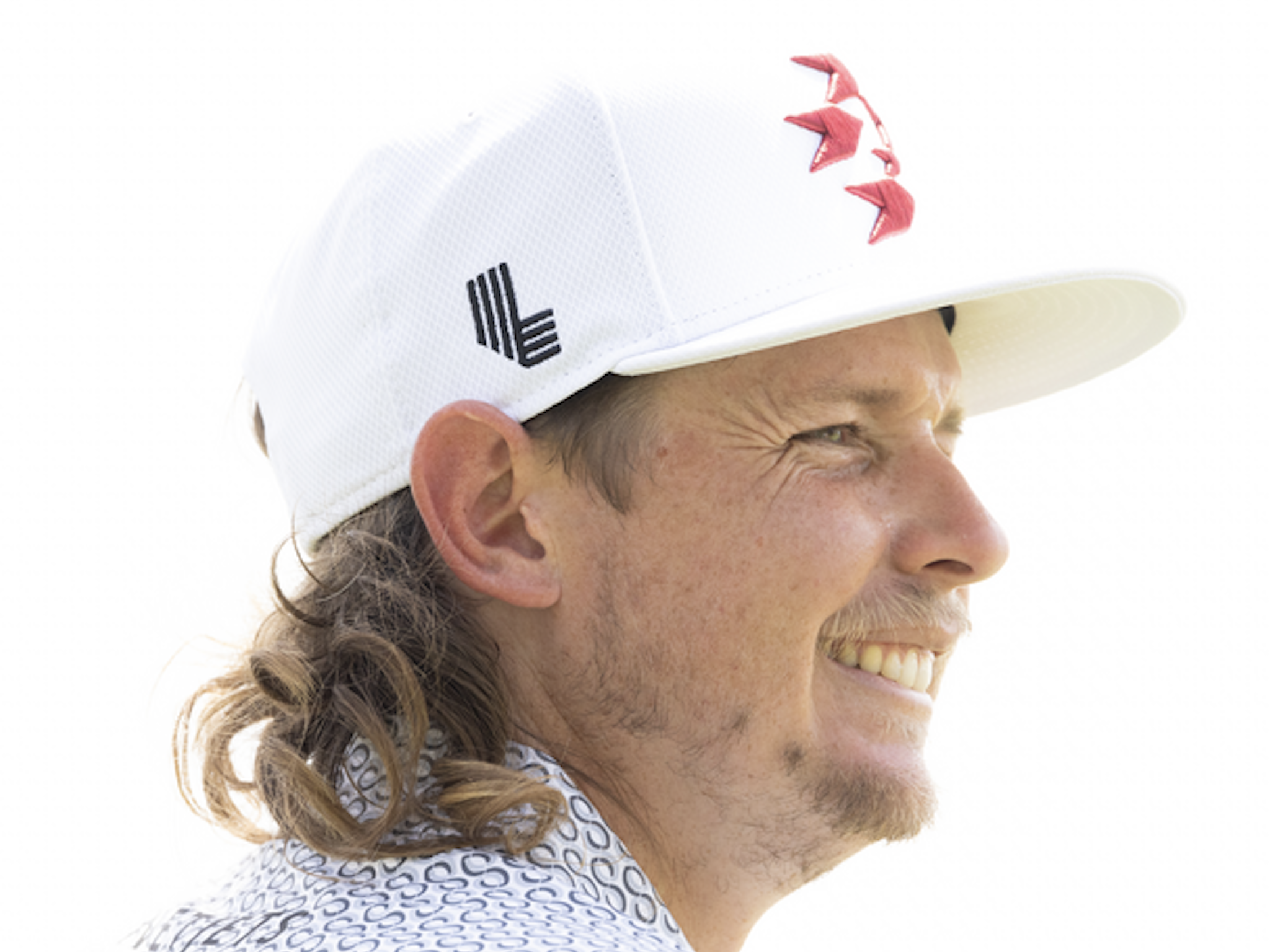
LIV Golf is set to begin its fourth event of the season at Hong Kong Golf Club in Hong Kong, China. This marks the first time that LIV Golf will travel to China for an event.
Hong Kong Golf Club is a par 70 measuring 6,710 yards. LIV will be using the “Fanling Course” for the event.
While speaking with Asian Tour player Travis Smyth, he gave me a rundown on what it takes to be successful at Hong Kong Golf Club.
“Hong Kong golf club, it’s pretty old school, like super short and tight. And I, I don’t think it falls into like a bomber’s hand. I think you’ll see a lot of guys hitting it to roughly the same spots on the majority of the holes. There’s a few holes where Bryson will be able to unleash a few but not many. When I played here, I hit Hybrid on Par 4’s off the tee maybe like seven times.”
Travis also said that the tight fairways and penal potential misses will keep the bombers at bay.
“It’s just that sort of course you’re hitting it like anywhere from 220 to 240 off the tee. And then from there you have a range of holes where it’s like kind of some sort of wedge or nine. It’s not very long.”
Around the green game will also be tremendously important at Hong Kong Golf Club.
“The greens are small as well and it’s usually quite hard to get up and down if you miss the greens. Someone like Cameron Smith I could see doing really well there. He played well in the international series. but just someone that’s, you know, pretty dolled in with their, their scoring clubs, he’s probably going to do well there.”
Players dialed in with their game from tee to green with control over the golf ball should fare extremely well.
“You can’t really scramble from the trees either. So, you really just have to. I’d, yeah, just whoever’s the best ball striker that week, you can’t really strap it around and fake it around there. You got to hit it straight. The tree lines are dead, there’s some hazards and stuff. It’s a short, tight quirky course, not what any of these guys are probably used to.”
Despite it being short, don’t be surprised if it gives players some real trouble.
“It should be fun viewing because there’ll be a lot of opportunities. They’ll feel like they can go low around there because it’s short but, you know, you make a few bogeys, and you get quite frustrated, and you start pushing off the tee and find some trouble and stuff. It can eat you up as well.”
Smyth finished 2nd at Hong Kong Golf Club to qualify for the 2023 Open Championship at Royal Liverpool.
Past Winners at Hong Kong Golf Club
- 2023: Ben Campbell (-19)
- 2022: Wade Ormsby (-17)
- 2018: Aaron Rai (-17)
- 2017: Wade Ormsby (-11)
- 2016: Sam Brazel (-13)
- 2015: Justin Rose (-19)
- 2014: Scott Hend (-13)
- 2013: Miguel Angel Jiminez (-12)
The top of the board once again will be a major threat this week. Jon Rahm is still in search of his first win on LIV and has been knocking at the door in each of his first three starts. Brooks Koepka hasn’t yet contended but is playing steady golf and has yet to shoot a round outside of the 60’s this season. Joaquin Niemann is the hottest player on the planet and has shown no signs of slowing down.
However, on a golf course that can neutralize the big hitters, this is an event that seems a bit more up for grabs than we’ve seen in the first three LIV events.
LIV Golf Stats YTD
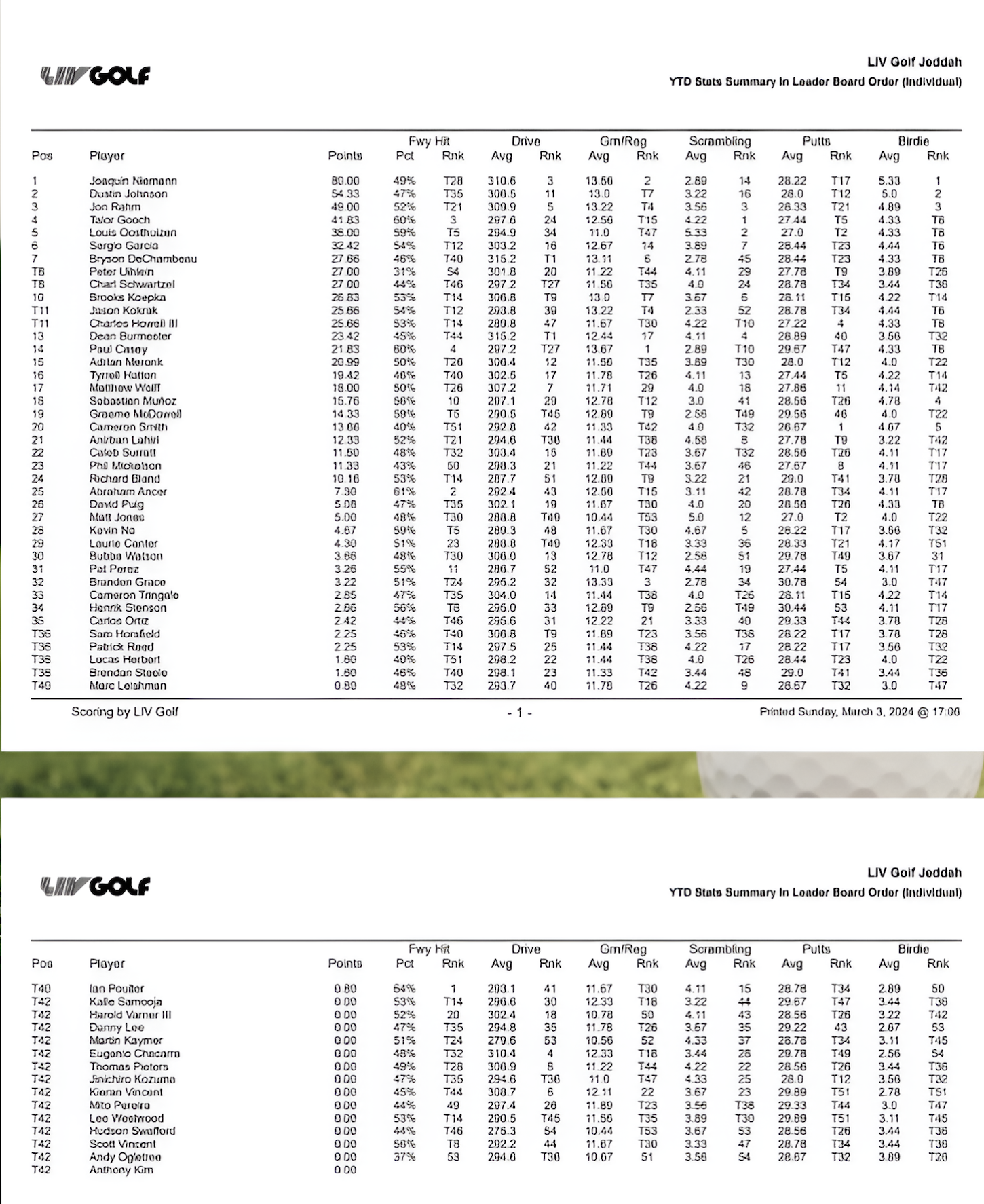
2024 LIV Hong Kong Picks
Cameron Smith +2000 (Bet365, BetRivers)
It’s been a slow start for Cam Smith this season. In his three starts on LIV, he’s finished T8, T15, T41 and has yet to look like the Cam that is one of the best players in the world. Hong Kong Golf Club should be the perfect course fit to get the former Open Champion out of his slump.
Hong Kong Golf Club is tight off the tee, and many players won’t be able to hit driver. That will neutralize some of the best drivers of the golf ball in the field and propel players like Cam, who are almost unbeatable from fairway to green. Cam’s driver has been a weakness throughout his career, and it’s been especially pronounced this season. He’s tied for 51st in fairways hit thus far on the season. Taking driver out of his hand this week could be exactly what he needs to get on track.
Despite the poor tee balls, Smith still ranks 1st in putting and 5th in birdies made. He’s also a great scrambler, and with small greens at the course, having to get up and down is inevitable. If he can play from the fairway this week, he should have a major advantage in the other facets of the game.
Louis Oosthuizen +2000 (DraftKings)
Louis Oosthuizen should be an absolutely perfect fit for Hong Kong Golf Club. The South African has been remarkably consistent over the past few months dating back to the fall, where he won two consecutive DP World Tour events and also finished 2nd at the International Series Oman. In his three LIV starts this year, Louis has finished T8 at LIV Mayakoba, 50th at LIV Las Vegas and T2 at LIV Jeddah.
Louis is relatively short off the tee and that won’t hurt him this week. He is one of the best putters and scrambler on LIV, and his silky-smooth swing looks as dialed in as ever at the moment. He’s yet to win a LIV event, but a victory for Louis seems imminent.
Patrick Reed +5000 (FanDuel)
Patrick Reed is another play who’s yet to win a LIV event but has been a winner throughout his entire career. The former Masters champion should love Hong Kong Golf Club as it will play to his strengths on and around the greens.
Reed played on the Asian Tour this fall and finished T15 at the Hong Kong Open and T7 at the Indonesian Masters. The experience in Asia this season should be a benefit for Reed acclimating to the travel and conditions this week.
The 34-year-old should benefit from taking driver out of his hand and similar to Smith, can beat anyone in the world if the tournament become a short game competition.
*Featured Image and Stats Image courtesy of LIV Golf*
- LIKE12
- LEGIT8
- WOW4
- LOL0
- IDHT0
- FLOP1
- OB1
- SHANK7
-

 19th Hole3 weeks ago
19th Hole3 weeks agoTour pro calls Anthony Kim a ‘f*****g idiot’ following Instagram comeback post
-
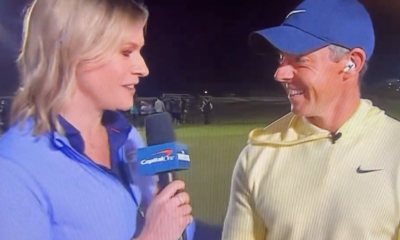
 19th Hole3 weeks ago
19th Hole3 weeks agoThis Rory McIlroy post-round ‘The Match’ moment is going viral…but all is likely not what it seems
-

 Whats in the Bag3 weeks ago
Whats in the Bag3 weeks agoAnthony Kim WITB 2024 (February)
-
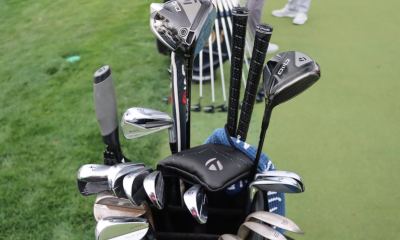
 Whats in the Bag2 weeks ago
Whats in the Bag2 weeks agoScottie Scheffler WITB 2024 (March)
-
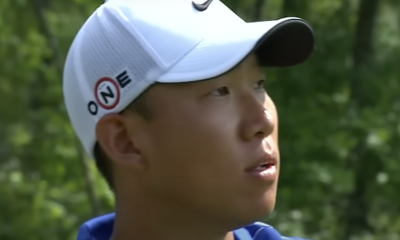
 19th Hole3 weeks ago
19th Hole3 weeks agoAnthony Kim’s speculated LIV Golf sign-on fee may surprise you
-
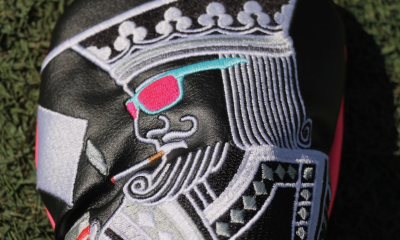
 Tour Photo Galleries2 weeks ago
Tour Photo Galleries2 weeks agoPhotos from the 2024 Arnold Palmer Invitational
-
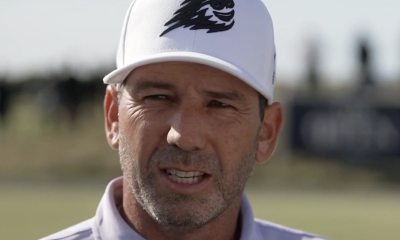
 19th Hole2 weeks ago
19th Hole2 weeks agoThe total sum that Sergio Garcia needs to pay in fines if he wants to return to DP World Tour revealed
-
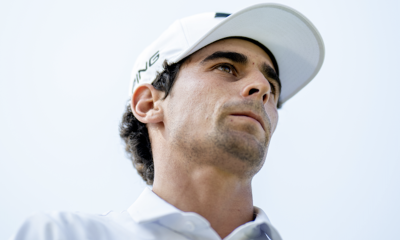
 19th Hole2 weeks ago
19th Hole2 weeks agoJoaquin Niemann names 3 PGA Tour events he’d love to play each year ‘in a perfect world’



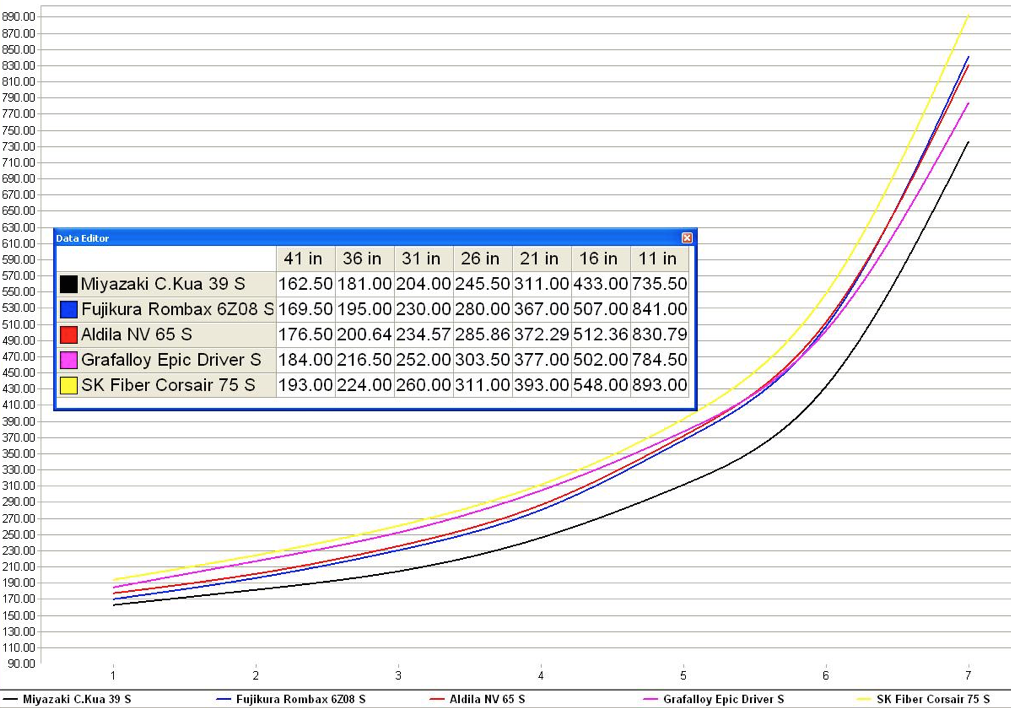
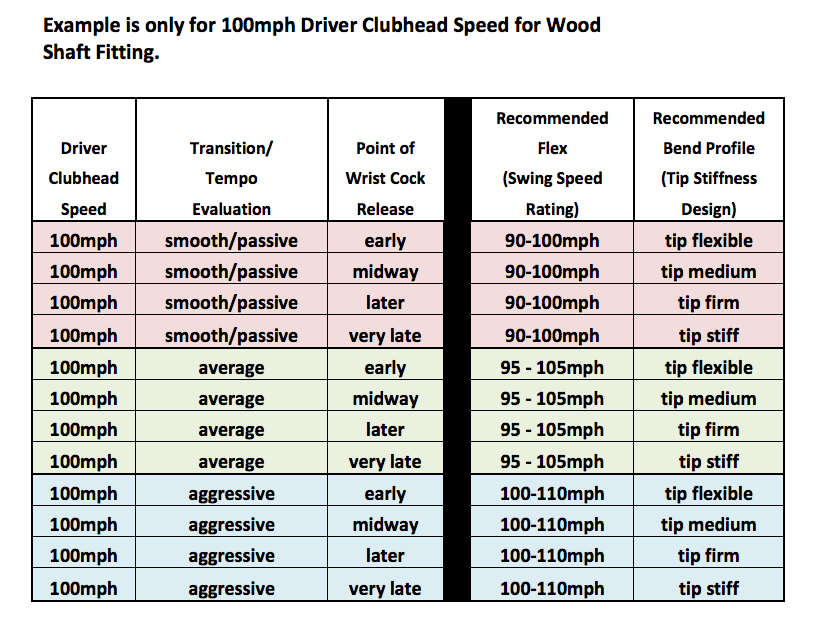
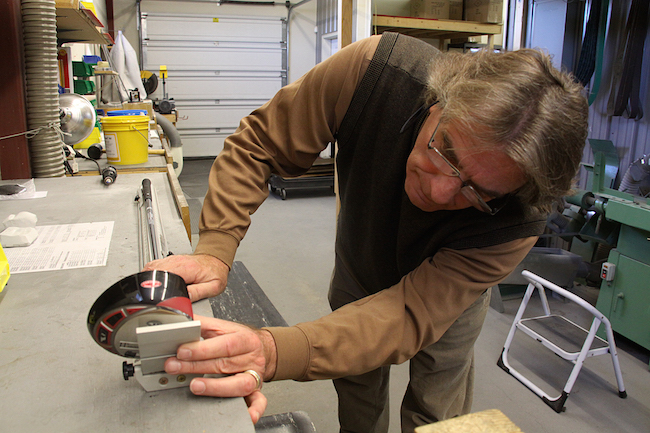


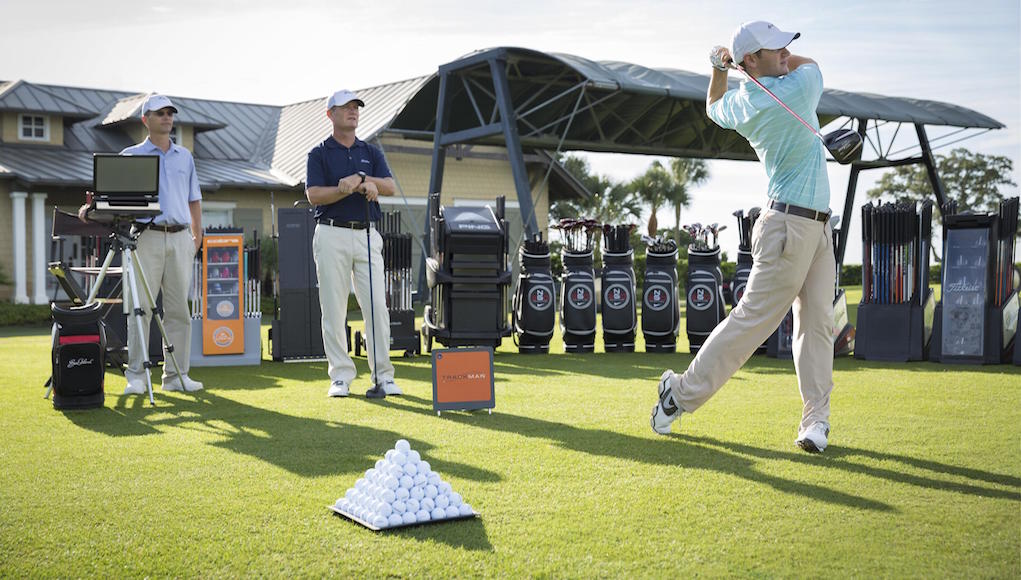
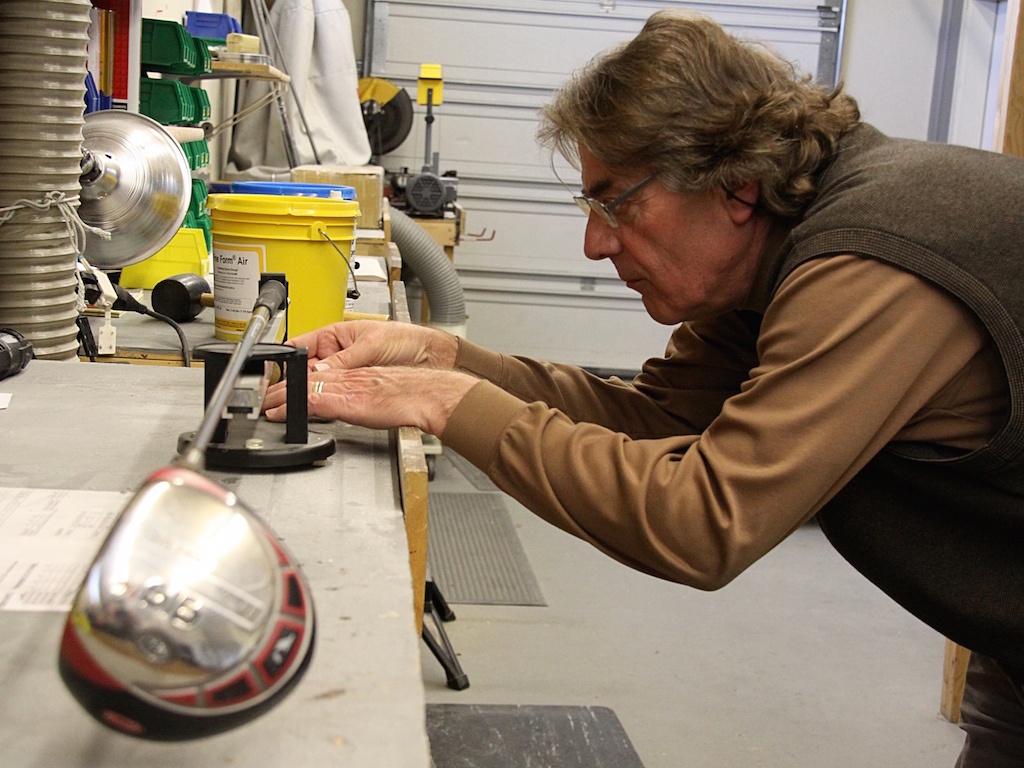
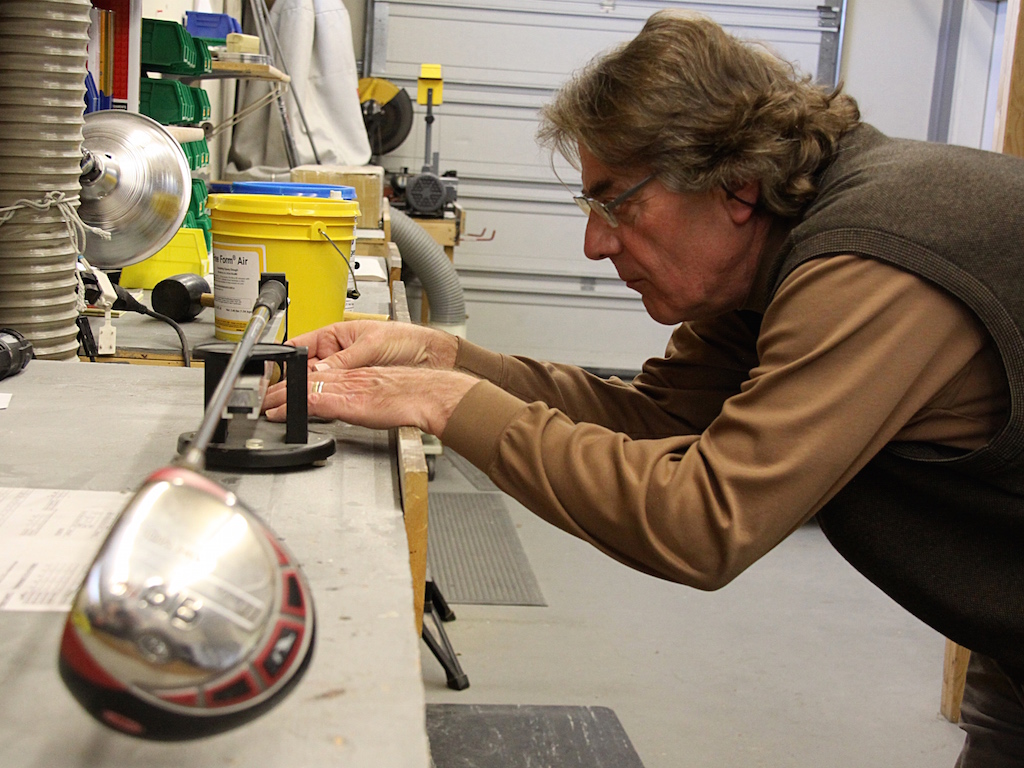

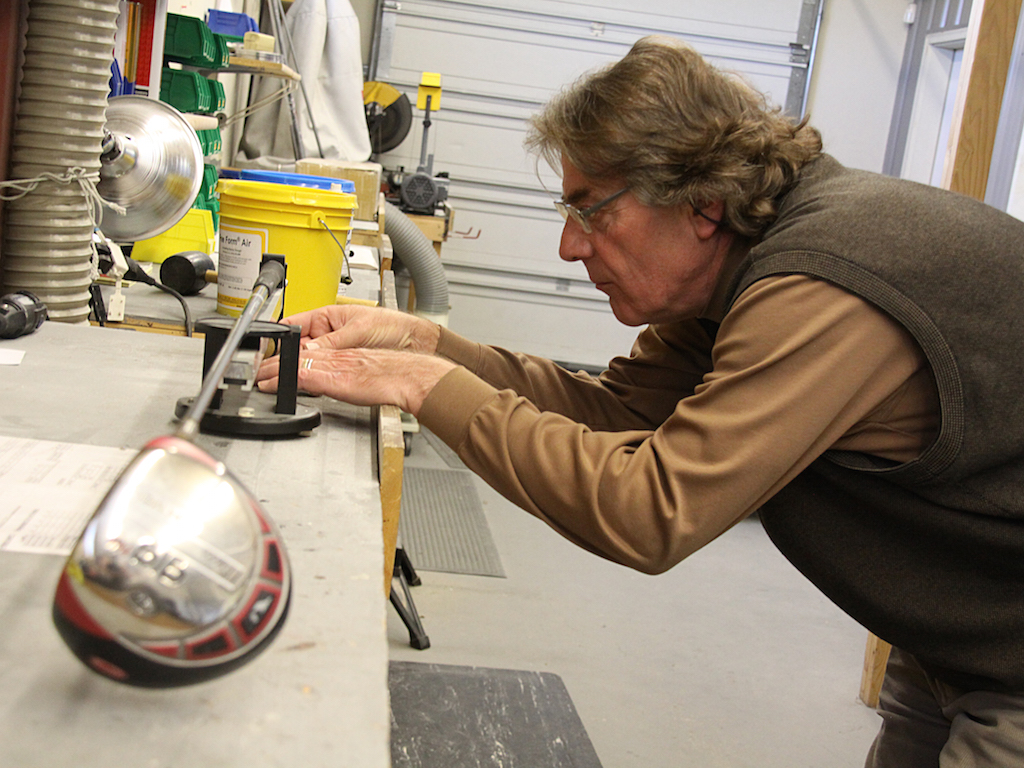
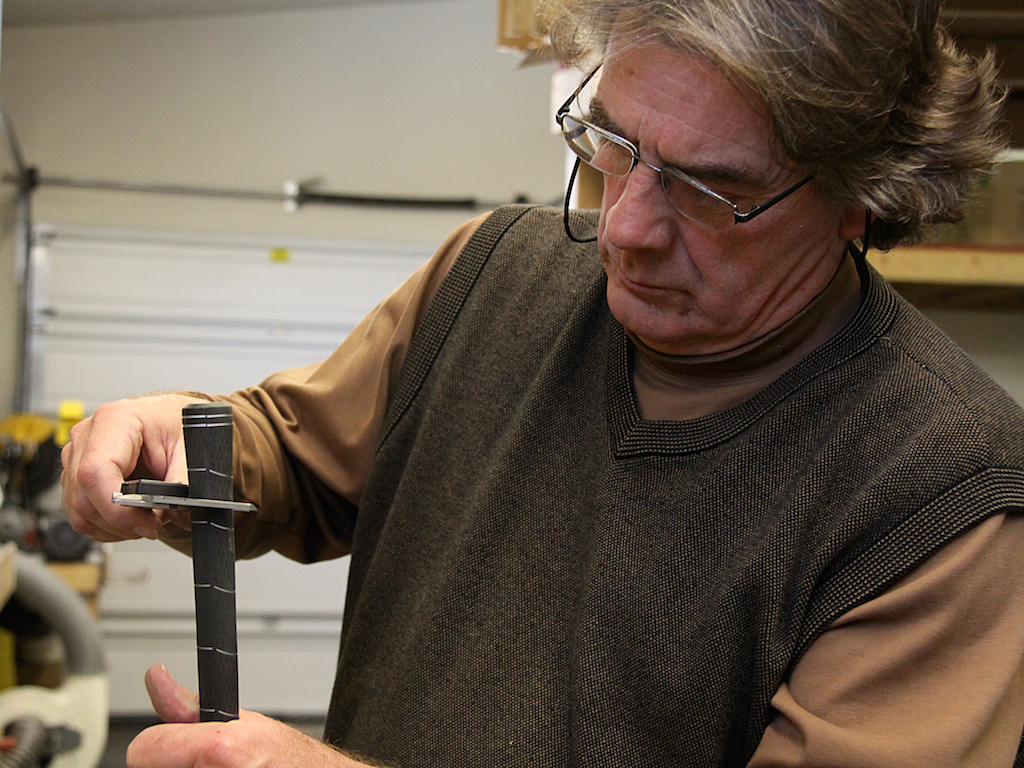
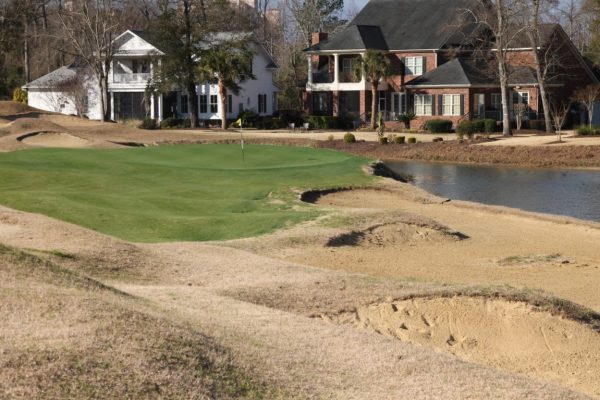
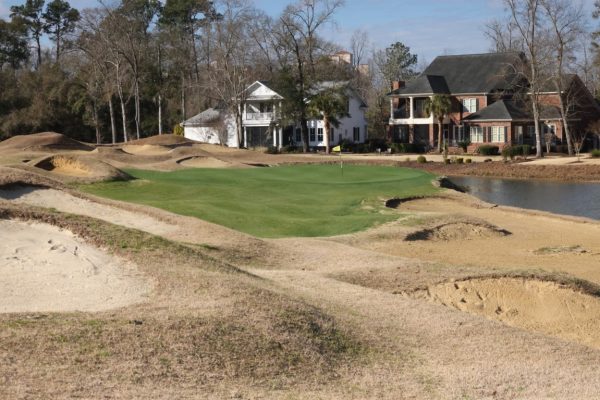
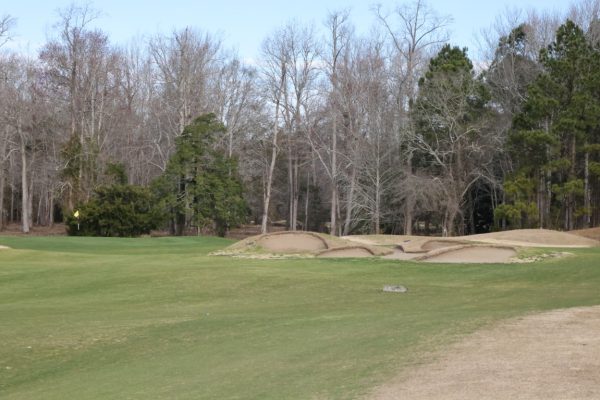
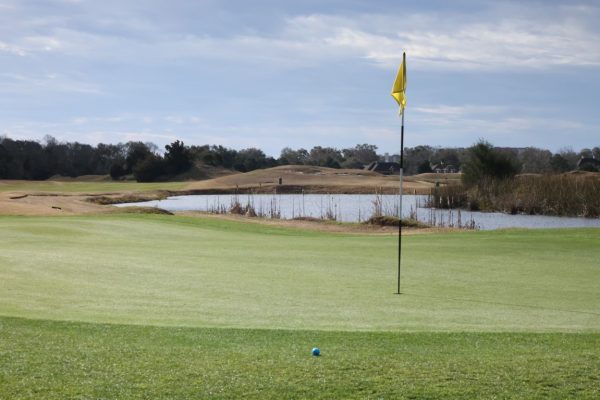
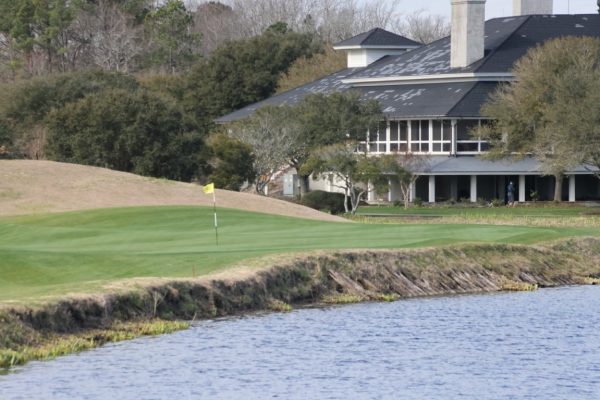
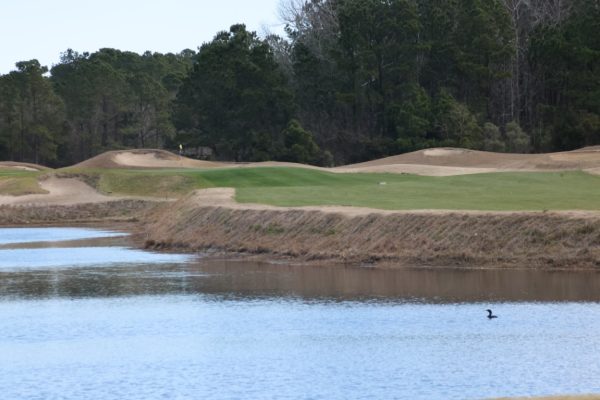
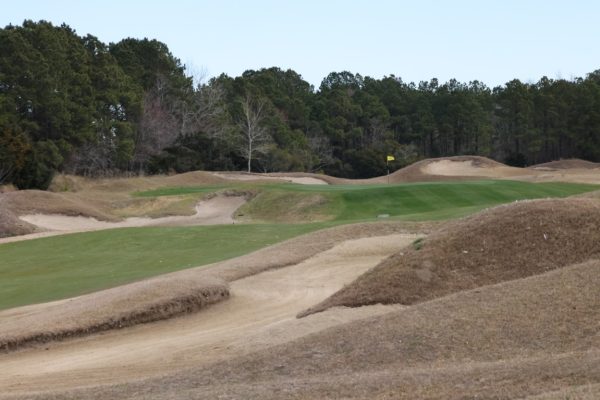
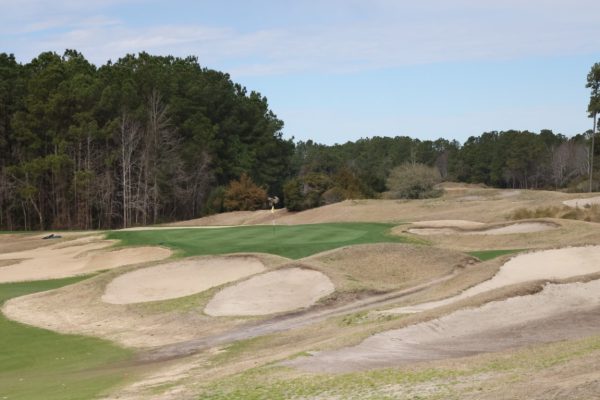

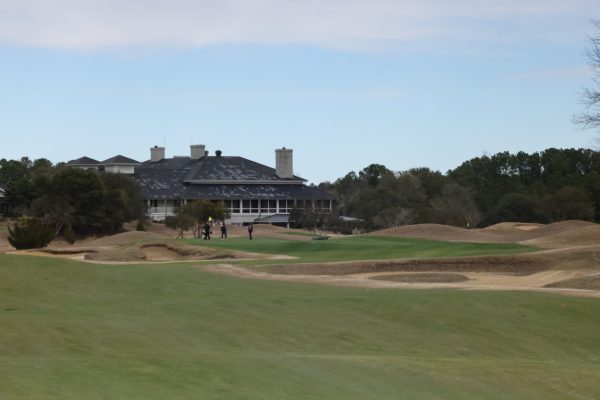
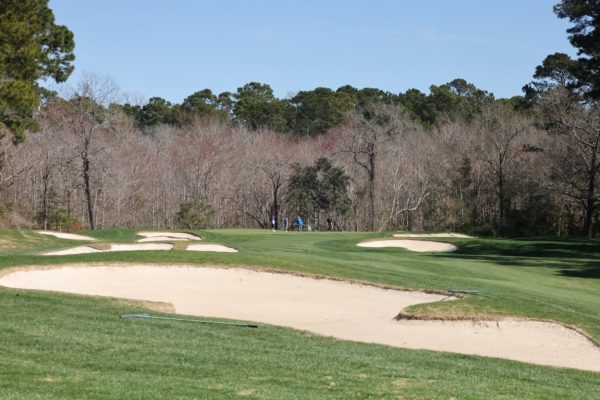
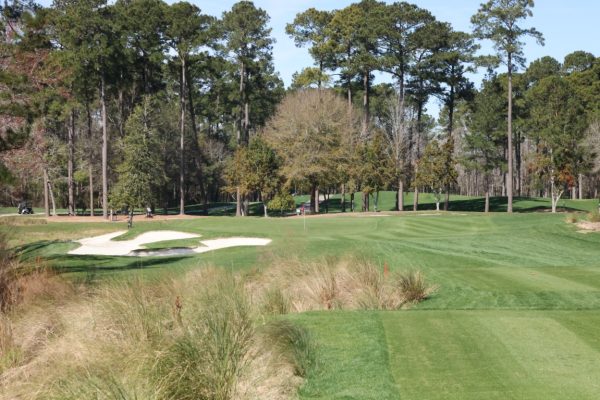
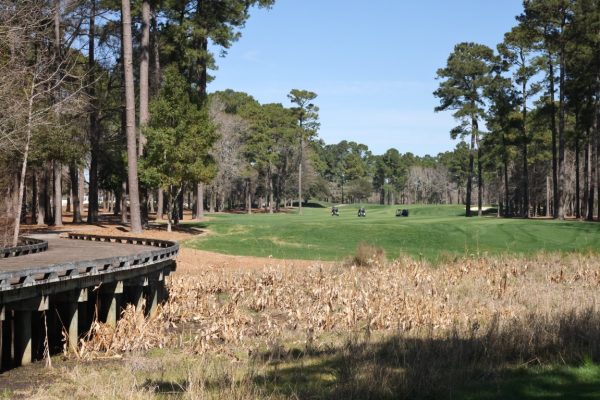
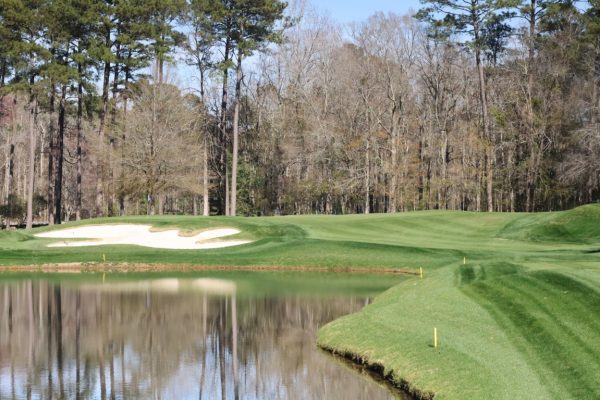
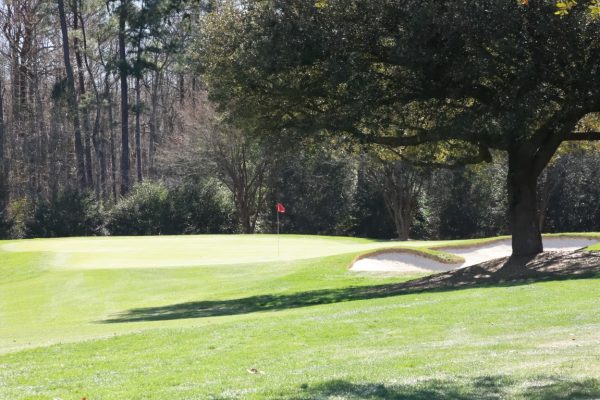
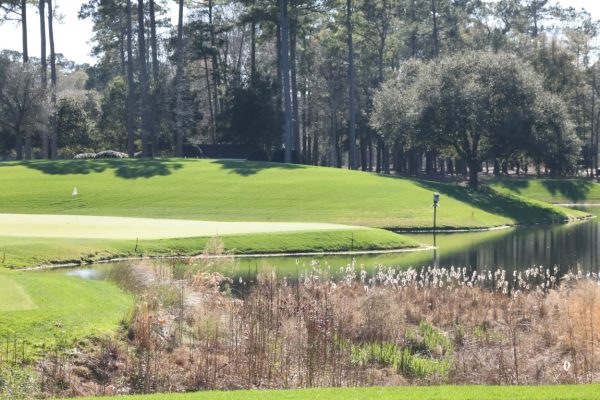
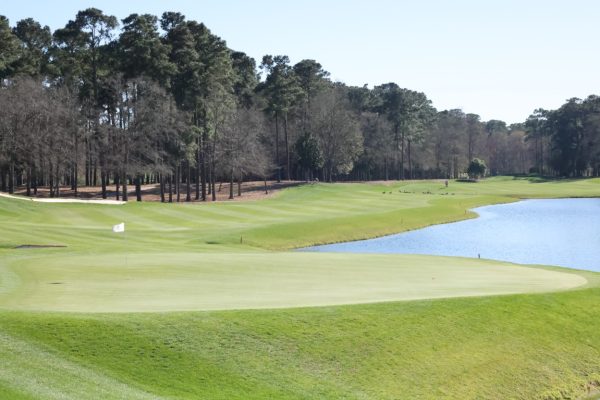
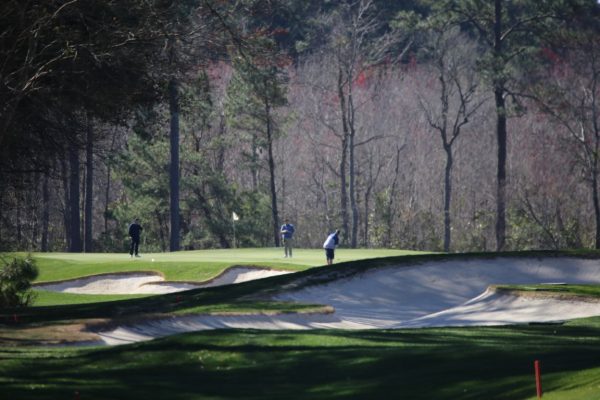
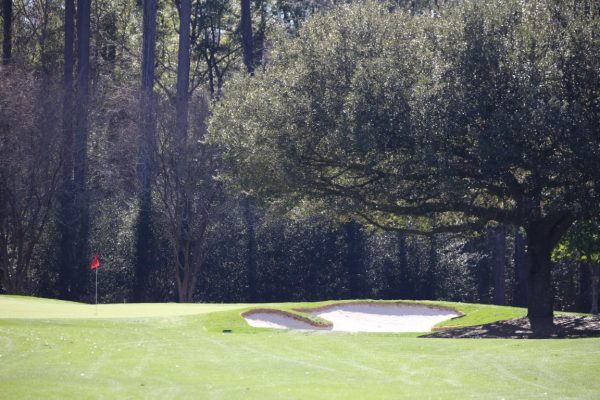
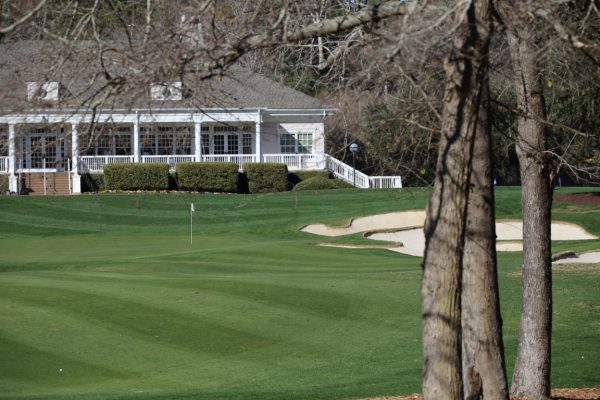
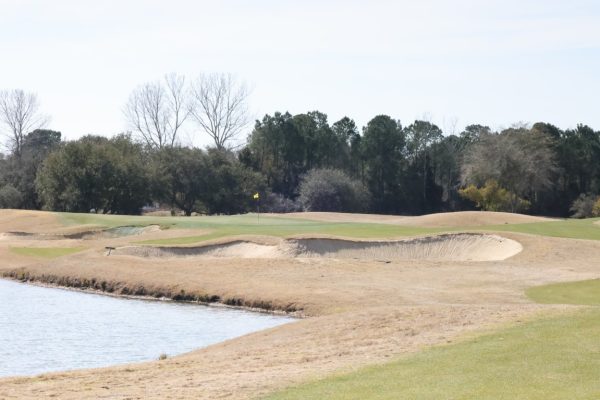
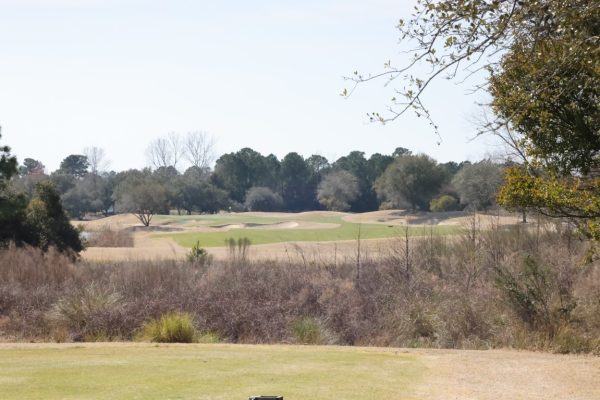

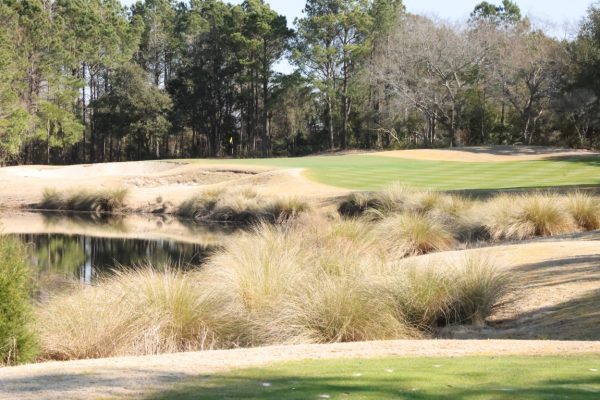


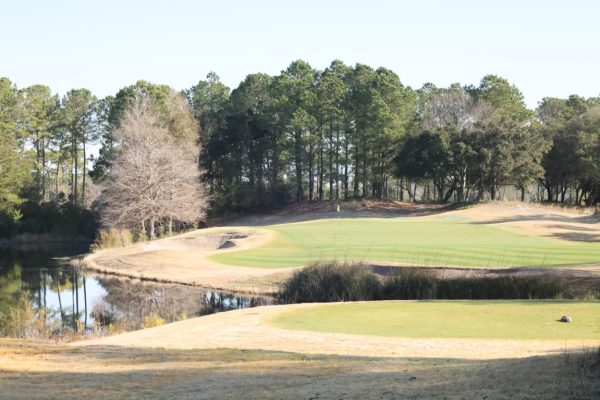
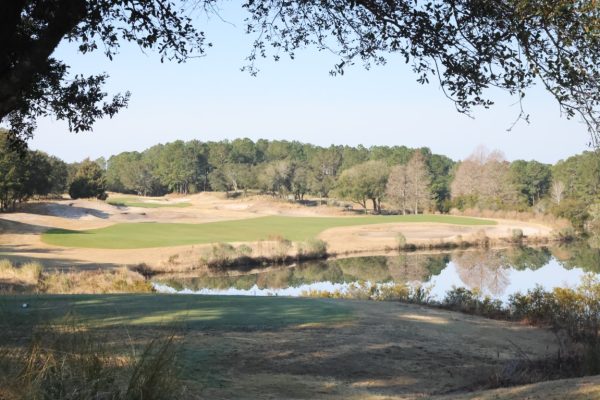
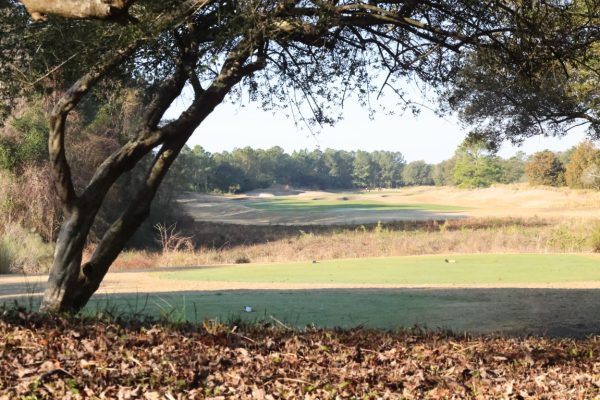
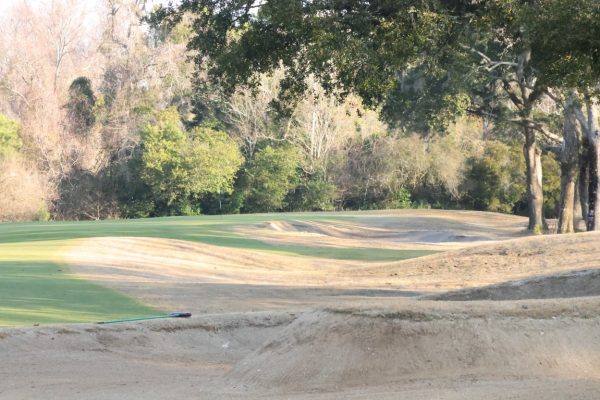
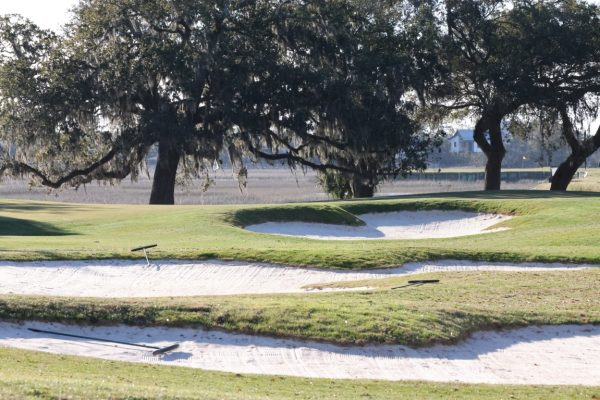
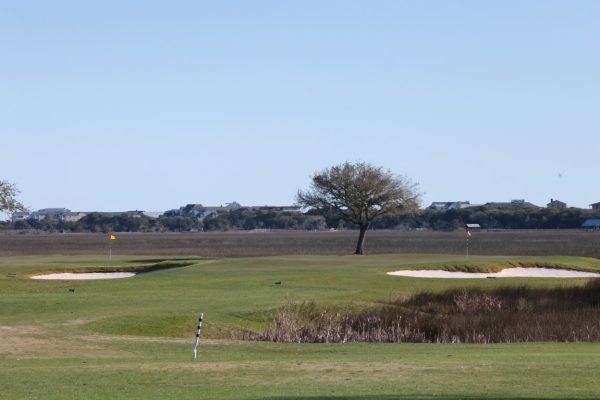
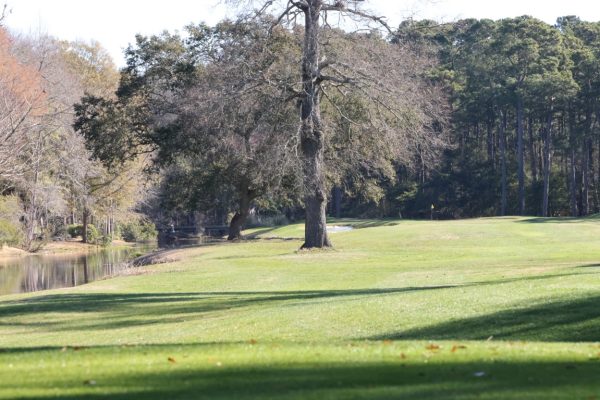
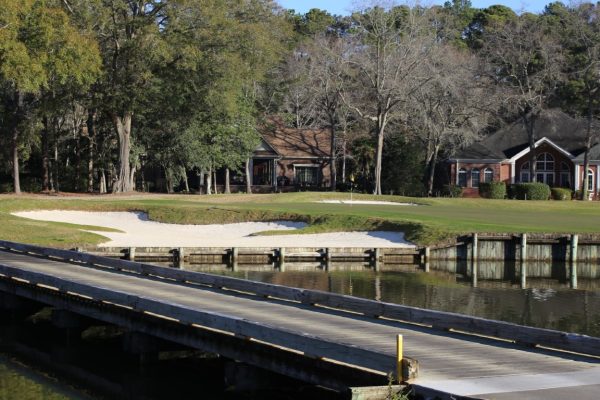
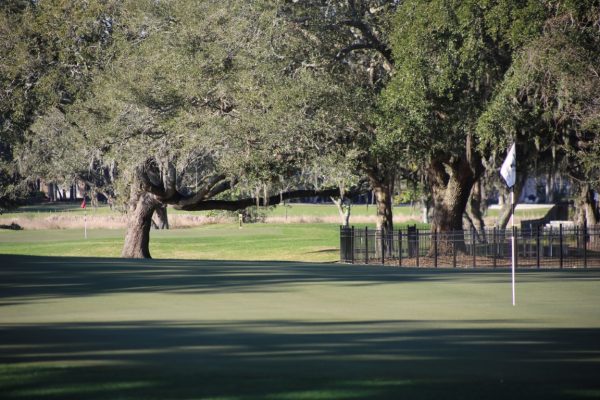
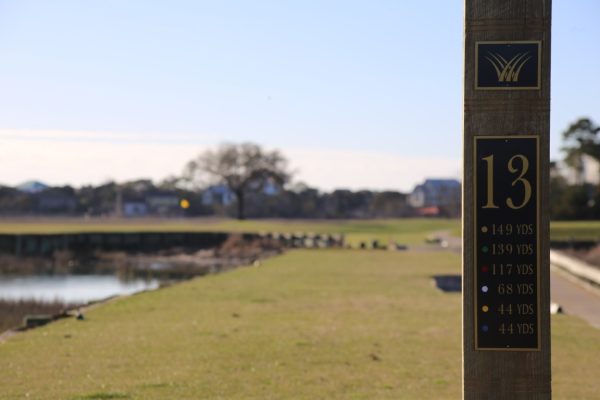
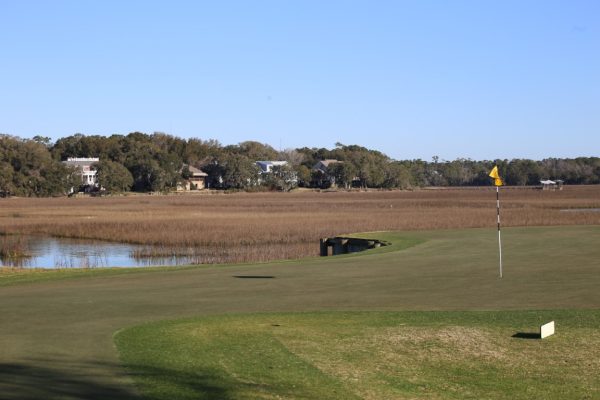

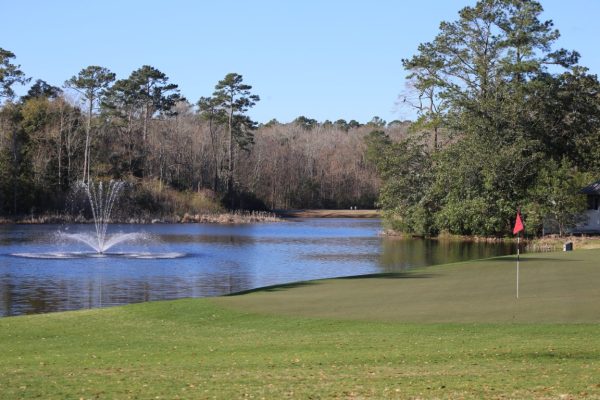
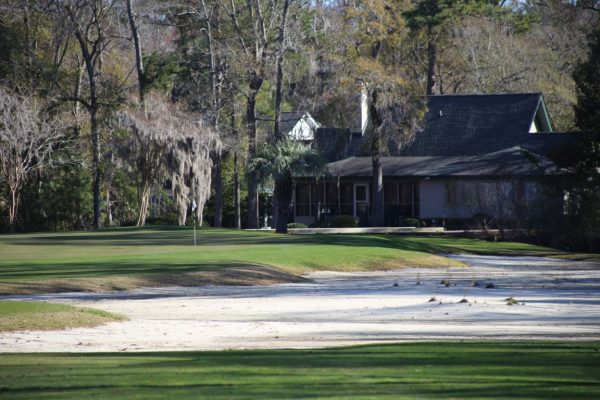






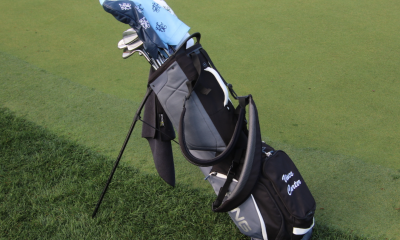

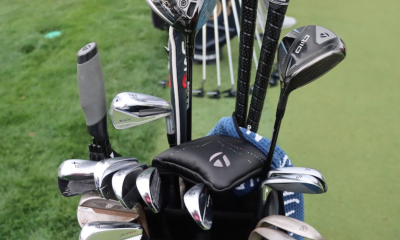





today tv schedule
Oct 7, 2023 at 5:53 pm
I would recommend using a stiffer shaft flex for a higher launch.
Jim M.
Mar 24, 2015 at 10:56 am
Hello Tom,
I’m curious if you have any thoughts or opinions on the accuracy/validity of the Golfworks “MPF Shaft Ratings”? Up to this point it’s the only shaft rating guide that I’ve used, and have found it to be better than going about shaft purchases blind, but not something I’d use and bet the house on.
Since I’m just up in Boulder, maybe we can discuss the fascinating World of Shafts in person someday. Thanks for your articles, really enjoy hearing your perspective!
Tom Wishon
Mar 24, 2015 at 4:53 pm
Jim M
Sorry, but I don’t think very much of the Golfworks MPF shaft ratings. If you take a look at the clubhead speed ranges that they advise, you will see that every R flex is rated for the same 77-92mph driver speed, every S for the same 93-107 swing speed and so on. In doing this they are showing they are not aware of the fact that there is no standard for letter flex as I showed in that bend profile graph in the article. Also, having a 14-15mph swing speed range within the same flex is too large. While there are some areas for which I hold high regard for Golfworks, this is not one of them and the information is not very good for helping golfers find the best shaft for their swing characteristics. That graph you see in the article comes from my Bend Profile software program in which we now have something like 3,000 different shafts in the data base. Many of the clubmakers use this as their guide for empirically comparing the full length stiffness design of shafts so they know much more precisely how one shaft compares to the other. We certainly do not have all the shafts in the data base because this is a monumental task to try to get samples of as many shafts as we can. We certainly cannot buy them all. So we ask the shaft makers to submit samples of their shafts for us to measure and put into the data base. And as happens, some of the shaft makers choose not to participate for whatever reasons. But as it stands now, this software program is the most extensive data base of shaft relative stiffness measurements for clubmakers or golfers to have to be able to make better empirical comparisons.
Jim M.
Mar 25, 2015 at 11:39 am
Thanks for the reply Tom. I was under the impression Golfworks had a bit more sophisticated analysis at play, but as you point out, my impression was false.
I’ve had a couple “clunker” purchases recently, and things are making a lot more sense why now!
Devon
Mar 18, 2015 at 10:54 pm
Hi Tom:
Thanks again so much for posting. Incredibly valuable knowledge. It seems from reading your posts, I have been misunderstanding the role of shaft flex (and it seems I would not be alone!). I have always thought the main consideration in choosing a shaft is the trade-off between distance and accuracy. Want more distance, get a flexible shaft that will bend more and load the club head more like a sling shot catapult. Want more accuracy, get a stiffer shaft that won’t bend and twist as much, and thus provide a more consistently square face at impact. If you have a fast club head speed like I do (115+ for driver), but a miss will put you three fairways over, get the stiffest shaft you can find. When I read your posts, however, I don’t see any mention of stiffness impacting accuracy (hitting it straight). I see mention of stiffness affecting two main areas: 1) trajectory, spin rate, and launch angle (for harder swinging, late releasing folks, which I think I would also be); and 2) an individual preference for the feel of the club either loading or not loading.
Have I been wrong all these years in thinking the main consideration in choosing stiffness is the trade-off of distance and accuracy?
Tom Wishon
Mar 20, 2015 at 3:47 pm
Devon:
Thanks for asking your question so I could have the chance to answer because this is a very good question since it has been said over the years that stiffer means more accurate and flexible means more distance. This concept has its roots from way back, long before serious research was done to find out precisely what the stiffness design of a shaft really does for golfers with different swing characteristics.
It fooled Karsten because those who remember Ping clubs from the 70s and 80s recall that he always used one very stiff flex in all the clubs Ping made back then, from this belief that going very stiff was better because it offered better accuracy. But once he and his engineers discovered the real performance contribution of flex and bend profile, Ping did move away from this original very stiff philosophy to make their clubs with different flexes to better match to the clubhead speeds of golfers.
Where this stiffer is more accurate and flexible is more distance belief came about was from way back when really good players would use different flex shafts – not from regular golfer testing with different stiffnesses. When a high clubhead speed player with a later release uses a MUCH more flexible shaft, the forward bending of the shaft coming into impact not only increases the dynamic loft to result in a higher launch/more spin/higher flight, but a greater amount of forward bending also causes the face to close a little bit too. So these higher speed, late release players would see that they had a tendency to draw or even hook the ball a little more when using a much more flexible shaft. Changing to a stiffer shaft reduced the amount of forward bend on the shaft at impact, which in turn lowered launch/spin/trajectory AND reduced the tendency of the forward bend to close the face. So from this came the belief that stiffer was more accurate.
Not so with avg to regular players because without a higher speed AND later release, the shaft cannot come to impact in a forward bend position to bring about any real change in launch/spin/trajectory or any change in the face angle position.
The concept that more flexible meant more distance came from the fact that when a higher speed, later release player used a more flexible shaft, often times the higher launch resulted in more carry distance, particularly if the player was using too little loft on the driver for his speed and his angle of attack. But here again, this does not work for early to midway release players because the shaft can’t be in a forward bend position at impact with an early to early-midway release and only gets to that point as the release gets a little later and later in the downswing.
So to a small extent, going stiffer can have a small effect on accuracy, but typically only if the player were using a shaft that was too flexible for his speed and downswing force/tempo. Thing is, it is NEVER a good thing to play with a shaft that is stiffer than what your speed and downswing force dictates because that has the effect of making impact feel more dead/boardy and also can affect the golfer’s swing timing, tempo, and release in an adverse manner.
Final point – ACCURACY is far, far more a product of getting the right fit for your length, the shaft weight, the headweight, the face angle. The shaft flex is a distant and only slight contributor to that.
Marty Neighbour
Mar 20, 2015 at 4:49 pm
Great read. Thanks Tom.
James
Mar 18, 2015 at 12:40 am
you could write a book…and that book would be called “Bullsh*t”…..unless you are a low single digit handicap player it doesn’t amount to a hill of beans what kind of shaft you are using. whether its a stiff or extra stiff or you pay $1000.00 for some after market shaft or use a made for shaft or some proprietary shaft. your swing just isn’t going to be consistent enough to see and difference. and they guys whos swings are consistant enough? its really just fine tuning…and I mean FINE tuning…
Tom Wishon
Mar 18, 2015 at 10:41 am
JAMES
I have said many times in my books and articles that golfers have to have a higher clubhead speed and mainly a later release before differences in the shafts’ stiffness design will begin to show an effect on changing the launch angle, trajectory and spin of the shot. So if you assume that only low single digit handicappers have a higher speed with late release, then you’re right – at least from a launch angle, trajectory and spin standpoint of performance related to different shaft stiffness designs.
On the other hand, the stiffness design also can have a very big effect on swing tempo/timing/rhythm and on solidness of impact feel. And these elements of indirect performance from the shaft’s stiffness design can most definitely be perceived by high single digit, middle digit and even some higher handicappers depending on how much golf they have played.
Pretty much most golfers who have played a lot can notice when a shot feels dead or lively when the ball leaves the face. When a shaft is too stiff for a golfer, the feeling of impact in the center of the face becomes more “dead” or “boardy”. And while that won’t affect actual ball speeds or shot characteristics, it most certainly can affect the golfer’s sense of feel to the point that he begins making worse swings and becomes more inconsistent as he fights with this sense of dead impact feel from the shaft being too stiff. This most certainly is an element related to stiffness design that more than just low single digit players can perceive.
Yes, no question, and as I have said before, for the golfers with avg to slower speeds who also have an early to early-midway release, the elements of length, loft, lie, face angle, shaft weight, total weight, swingweight, head design, set makeup and grip size will for sure contribute much more to game improvement than will the stiffness design of the shaft. But even so, this matter of getting the right flex for avg golfers so their sense of timing/rhythm is a little better, and very much so the feeling of impact is more solid are important elements related to the stiffness design that have to be observed for these less skilled players.
Justin
Apr 8, 2015 at 12:37 am
Hi Tom,
I’ve been into clubfitting for a few years now, and am a firm believer in the Common Sense Clubfitting system you developed. My question about this thread, with the importance of flex for less-skilled players, is: how would it matter?
What I mean is, when an early unhinging of the wrist angle happens, doesn’t all of that flex go out the window (so to speak)? Am I correct in believing the shaft flexes and returns to straight well before the clubhead gets to the ball? If so, would the flex really have that much of an effect on “feel”?
Thanks for all you do,
Justin
Dennis
Mar 15, 2015 at 9:28 am
Seems hard to believe you can discuss shaft flex without mentioning splining and whether the shafts were spline for maximum or minimum flex.
Tom Wishon
Mar 15, 2015 at 6:12 pm
Dennis
Like I said in the opening paragraph, one could easily write a book about all the elements related to shafts, shaft flex, bend profile and the fitting thereof. Shaft spine alignment can be important to SOME players depending on their swing characteristics, but by no means is it a critical element for ALL golfers. With the limited space I have for each piece, I have to award a priority to covering information that will be pertinent to the largest segment of golfers and spine alignment/orientation does not fit that priority. FYI so I don’t leave this too much in the dark, I’ll leave you with two basics about it – 1) far fewer shafts today exhibit asymmetry properties for which a spine/asymmetry check and realignment is necessary, 2) shaft spine alignment/orientation becomes more important as the clubhead speed gets higher, as the downswing move becomes more aggressive and as the release becomes later and later in the downswing.
Charles
Mar 13, 2015 at 2:19 pm
I’ve read a lot of articles from club fitters about shaft flex and there are folks saying “You should play the softest shaft you can control”, while other guys say “You should play the stiffest shaft you can get the ball airborne”. I really would like to know your opinion about that. Let’s say that when you are fitting someone you see by the numbers that there are two shafts that match the player’s swing, but one is stiffer than the other, what would be your recommendation? Thanks
Tom Wishon
Mar 13, 2015 at 8:06 pm
CHARLES
Depends on the golfer’s swing characteristics. The higher the clubhead speed, the more forceful the transition and tempo and the later the release, the more it would be better to err on the side of being a little bit too stiff than too flexible. But the lower the speed, the more passive the downswing force and the earlier the release, the better it would be to err on the side of being a little too flexible than too stiff.
Reason is that higher speed, more forceful transition/tempo and later release are all swing characteristics that make the shaft bend more in the swing. So as the player has the ability to bend the shaft more in the swing, the better it would be to err on the side of being a little too stiff. However, fitting the shaft flex/bp always should involve asking the player if he has a preference for the bending feel of the shaft based on experience in the game. if so, then you really have to keep this in mind when making final decisions for the flex/bp. So if the player has preferred shafts that are stiffer than what his swing characteristics might otherwise dictate in a fitting analysis, then you have to err on the side of being a little more stiff. And vice versa too.
Marty
Mar 13, 2015 at 12:20 am
Link to the reference
http://www.wishongolf.com/forum/viewtopic.php?f=1&t=12641
RP Jacobs II
Mar 12, 2015 at 9:22 pm
Great article Tom!!
Stay well my Friend 🙂
Golfingly Yours,
Richard
Sean
Mar 12, 2015 at 3:10 pm
I have three different flexes in my bag: light, regular, and stiff. Works for me.
marty
Mar 14, 2015 at 4:20 am
I thought I was the only weirdo who does this. Hahahahah
Chris C
Mar 12, 2015 at 2:33 pm
I seem to recall that Mr.Wishon has previously suggested that, for those who release the club early, shaft flex is not a significant factor in fitting. I believe that he noted that all of Ping’s early irons came with stiff flex shafts. If I have recollected correctly, Mr. Wishon might actually concur with Mr. Crossfield’s assessment. At least with regards to early releasers.
gunmetal
Mar 12, 2015 at 12:35 am
Tom,
Have you checked out Mark crossfield’s YouTube series on ‘shaft flex does it matter’? Really interesting on how miniscule the differences in performance are even from x to L let alone S to R.
David
Mar 12, 2015 at 6:25 am
Please don’t tell me you’d believe Mark Crossfield over Tom Wishon. Shaft flex obviously matters, Mark and his friends are all low players, try testing on mid-high handicappers and he’d see a noticeable difference.
Rich
Mar 12, 2015 at 8:42 pm
I think Mark Crossfield’s video makes sense. He has the data to back it up as well. Yes they are low markers but there are a lot of guys out there that swing at the same speed as MC (roughly 150 ball speed with a driver) so it would seem quite relevant to me.
Marty
Mar 13, 2015 at 12:02 am
Actually I believe Tom himself has stated that shaft flex matters very little with an early release swing and matters mostly on late to very late release swing. With early release swings, the club has already released and returned back to straight before impact therefore negating the flex
Mat
Mar 12, 2015 at 1:49 pm
I’m just shaking my head over that comment…
Tom Wishon
Mar 13, 2015 at 7:58 pm
Gunmetal
There are two possible ways that the shaft can have an effect on performance. 1) as clubhead speed gets higher AND with it, as the release gets later, the shaft will show an effect on the launch angle, trajectory and spin. But the other side of this is also the fact that as clubhead speed gets slower AND with it, the release happens earlier, the shaft cannot have any real effect on LA, Traj and spin. This is because the early release causes the shaft to go into its forward bending action too soon before impact so by the time the head gets to the ball, the shaft has rebounded back to straight and thus can’t affect LA, Traj and spin. Add to this the fact that slower speed means any potential change in the LA and spin are far less evident.
2) the other way the flex/bend profile can affect performance is when a golfer happens to have a very distinct sense of FEEL for the bending action of the shaft, when the flex/BP is dead on right in the wheelhouse of the golfer’s sense of feel, this means his timing for his release is as good as it can be, which in turn means he will reach his absolute highest clubhead speed as well as best timing and rhythm in the swing.
But not all golfers have a definite sense of feel for the bending action of the shaft. Some do, many don’t. And this is something that while usually more in the realm of better players, it is still possible to find a less skilled but experienced player who does have a real sense of feel for the shaft. In such cases even though the less skilled player may not have the speed or release to make the shaft elicit much effect on the LA, traj and spin, if he does have a very refined sense of feel for the shaft, this means getting him into the right flex/bp helps with his swing tempo, timing and rhythm.